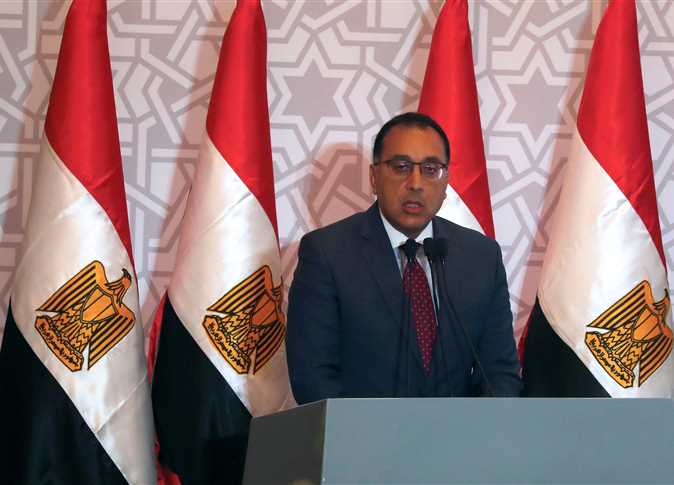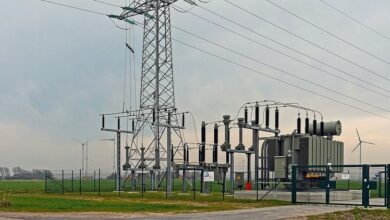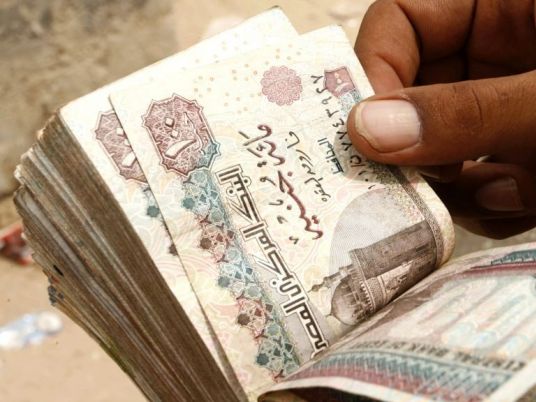Last month, the private daily newspaper Youm7 announced to readers that it would raise its print edition’s price from LE1 to LE1.50.
“To our dear readers,” the headline, posted on the paper’s popular website later that day, read. “We ask your permission to raise the price of Youm7. Al-Ahram [printing press] has raised the price of printing and increased the burden of newspaper costs.”
In a move typical of today’s media, a snapshot of the Al-Ahram document relaying the change accompanied the article.
For journalists and media analysts, Youm7’s decision — which followed similar price increases for independent papers Al-Masry Al-Youm and Al-Watan, with Al-Shorouk planning to raise prices soon — came as no surprise. Facing the falling pound, reduced advertising revenues and a changing readership, private papers, already losing money on each copy sold, felt forced to make the change.
In February, the state-owned and cash-strapped Al-Ahram printing company raised the cost of printing newspapers at its plants by 19 percent. This had a direct effect on Cairo’s cacophony of private newspapers, most of which publish through Al-Ahram’s press because of its comparatively lower, subsidized cost.
“When the printing went up and the dollar got more expensive, it was a 100 percent loss,” says Magdy al-Hefnawy, distribution manager at Al-Watan. “There are no advertisements. And the revolution has stopped business. Therefore, I have to find a solution to cover the costs.”
Behind the headlines, commentators also say the change in newspaper prices reflects fundamental barriers to sustainable development in the print sector. Long determined by political rather than public demand, business as usual has masked the true cost of producing the news.
“The problem is it’s a collapsed industry and market research is not available,” says Hisham Kassem, a veteran publisher and former publisher of Al-Masry Al-Youm.
Political tools, not enterprises
Egyptian media expert Adel Iskander says Egyptian newspapers have never been profit-generating enterprises determined by fair competition. Rather, government handouts to state-owned publications such as Al-Ahram have long skewed newspaper economics by artificially propping up the government papers.
When independent papers first opened less than a decade ago, they were forced to compromise and print at a loss to compete in an environment dominated by state papers. Consequently, they depended on a different kind of subsidy system in which they covered their costs through advertising — and business and political write-offs from wealthy financiers personally invested in the papers.
“There are very few ways in which newspapers can generate money,” says Iskander. “So now it’s kind of like a trifurcate of different factors that are hitting it all at once. You have an economic situation in the country that is driving business out and keeping businessmen wary of further investments.”
The political situation forces independent newspapers to be more concerned about what they say and “what can be done about it,” he explains.
“And then you’ve got the state itself trying to cut its own costs by increasing its rates on printing and distribution because it has a monopoly on them,” Iskandar says.
In 1960, former President Gamal Abdel Nasser nationalized the Egyptian press, stifling the private media sphere. In the decades that followed, the three state-owned newspapers — Al-Ahram, Al-Gomhurriya and Al-Akhbar — dominated the print sector.
While former President Anwar Sadat increased the diversity of views in print by allowing political party-affiliated papers, it was not until under former President Hosni Mubarak that the first privately owned paper, Al-Masry Al-Youm, was allowed to both report the news and print it in Egypt in 2004.
But Iskander says that while Mubarak allowed for the liberalization of the press with moves such as allowing independent papers to print at government-owned presses at a lower cost, he did so in a way to ensure continued state control.
“The economic subsidy was an added safeguard,” Iskander explains. “It gave the impression that there was more diversity in Egypt’s newspaper scene, but it gave the government the opportunity to pull the plug if need be.”
Today, journalists also see political motives behind Al-Ahram’s decision to implement the price increase under the Muslim Brotherhood-controlled government, even though it has reportedly been in discussion since 2010. Last year, the Shura Council appointed Brotherhood members and sympathizers to head the state-owned press and control the higher press council.
Many see the rise in the printing cost as a way for Al-Ahram to gain an advantage over its private competitors by forcing them to raise their price while it continues to sell its paper at LE1, postpone internal restructuring and deal with its bloated workforce. Moreover, the change comes amid an alarming rise in violent and legal attacks against the press, many initiated by the government and Brotherhood supporters.
“It was a political calculation,” Kassem says of Al-Ahram’s price change. “But again, the people who are in charge of the higher press council think that these jobs are a sacred cow. Again, I don’t think that’s sustainable.”
Hefnawy agrees. He argues that rather than raising the price all at once, Al-Ahram could have implemented the increase gradually to temper the short-term impact on private papers.
“The group who holds power in the government is the Brotherhood, and they are closing in,” says Hefnawy. “They are doing this to pressure the independent newspapers because they are the opposition.”
“[It’s] for the Brotherhood’s sake, make God forbid them,” Hefnawy adds.
Sherif Wadood, Al-Masry Al-Youm chief executive, considers state control ultimately harmful to the business.
“When the state nationalized the industry, all of the industry’s ingredients were really negatively affected. … The state-run media are not run for profit. They’re run for propaganda in my opinion,” Wadood says.
With propaganda as an agenda, economics become an afterthought, he says, “unless you are going bankrupt. Then you bring economics back into the situation.”
No business models
Politics aside, the price hike reveals a fundamental flaw in the Egyptian newspaper business model, experts say.
“The more you sell, which is the dream of every newspaper, the more you lose, in the Egyptian situation,” Wadood says. “Imagine any product that has not been raised 1 percent since 2004. It means that it gets cheaper every year.”
Wadood says the average 24-page paper costs about LE1.2, with about 20 piasters per copy sold to newspaper distributors. However, because of the limited circulation revenues, this model led to the counter-intuitive situation in which high-cost distribution newspapers such as Al-Masry Al-Youm lost more money the more they sold.
But private newspapers that have raised prices have not seen a substantial change in readership numbers, Hefnawy says, adding that while Al-Watan’s readership declined slightly after the price change, the paper experienced a slight uptake in March.
Circulation rates in Egypt, however, have always been notoriously hard to decipher, given the lack of market transparency. Kassem attributes this to the fact that there has never been much interest in market research because, independent of circulation rates, the state and business owners could determine newspaper content regardless of reader demands.
“People never look at demographics. People don’t have market research departments,” he says.
Iskander says readership has also generally been concentrated among urban and middle-class areas with disposable income. Given Egypt’s deteriorating economy, he predicts that as the purchasing power of the average Egyptian declines, so will newspaper sales.
Experts are thus concerned the increased cost of state-subsidized printing will most dramatically affect the average consumer.
“The flip side of the story is that although it is very subsidized from the newspaper point of view, it’s very expensive for the reader,” Wadood says. “And this is where the absurdity comes in.”
Wadood recalls a conversation with a newspaper distributor a few years ago in which the man explained how expensive papers were for the lower classes.
“In the 1950s and 1960s, the price of a paper was equivalent to one loaf of bread,” Wadood remembers the man saying. “Today, it is equivalent to 10 loaves of bread. Tell me, who is the father who would sacrifice 10 to 15 loafs of bread for a newspaper in Egypt?”
The way forward
For Wadood, the trick for newspapers going forward lies with innovative content that sells.
“The core question here is, are you providing unique content or not?” Wadood says.
The number of papers in Egypt is very low, he adds.
“This is not only because of the cost of the paper, which is very expensive from the reader’s point of view, but because you are not providing unique content,” he says. “There are so many areas that we are not even addressing.”
In recent months, several private newspapers have made moves to revitalize their print editions.
In February, Youm7 added a new page to its print lineup that is devoted to a particular area of popular interest. In addition to the more common coverage of books and art, each Monday, the paper reviews the week’s popular social and political happenings on Twitter and Facebook for print readers.
The same month, privately owned Al-Shorouk started publishing a weekly column by popular TV satirist Bassem Youssef in another attempt to bring Internet and TV sensations to print media.
While Hefnawy is confident that — in a country where two-thirds of the population still live without Internet access — print papers still have a shot in the foreseeable future, Iskander is less optimistic about what this print sphere would look like.
“The result will be the suffocation of any small sort of enterprising, fledgling publication. It will push any fringe political group that can’t afford to publish out of the way, and it will lead to more centralization and conglomorization of newspapers,” Iskander says. “There could be surprises along the way, but initially, it’s not a particularly good sign.”




